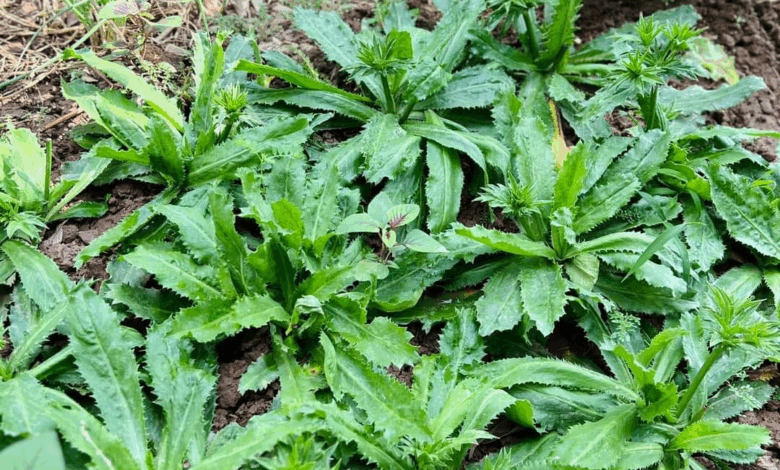Culantro: A Garden Herb More Valuable Than a Medicine Cabinet 🌱✨

f you have culantro (Eryngium foetidum) growing in your garden, you’re in possession of a natural treasure. Known for its distinctive aroma and numerous health benefits, this herb is often overlooked in favor of its more famous cousin, cilantro. But culantro’s unique flavor and medicinal properties make it worth celebrating.

What is Culantro?
Culantro, also called long coriander or sawtooth herb, is a tropical herb widely used in Latin American, Caribbean, and Southeast Asian cuisines. With its serrated leaves and strong, earthy fragrance, culantro is a must-have for soups, stews, and marinades. But its uses go far beyond the kitchen.
Health Benefits of Culantro
1. Rich in Nutrients
Culantro is packed with vitamins like A, C, and K, as well as essential minerals such as calcium, iron, and phosphorus. These nutrients support healthy skin, bones, and immune function.
2. Digestive Aid
Traditionally, culantro is used to relieve digestive issues such as bloating, indigestion, and diarrhea. Its natural compounds help soothe the stomach and promote gut health.
3. Anti-Inflammatory Properties
The herb contains antioxidants that help reduce inflammation, making it beneficial for managing conditions like arthritis or sore muscles.
4. Respiratory Health
Culantro has been used in herbal remedies to alleviate respiratory conditions like asthma and colds. Its antimicrobial properties can help clear airways and reduce infection.
5. Detoxifying Effects
In some cultures, culantro is believed to cleanse the liver and flush out toxins, supporting overall health and vitality.
How to Use Culantro
In Cooking
- Add chopped culantro to soups, stews, or curries for a bold, herbal flavor.
- Blend it into sauces or marinades for meat and seafood.
- Use it as a garnish to elevate any dish.
As a Natural Remedy
- Culantro Tea: Steep a few leaves in hot water to create a soothing tea that aids digestion and boosts immunity.
- Poultice: Crush fresh leaves and apply to wounds or insect bites to reduce swelling and speed up healing.
How to Grow Culantro in Your Garden
Culantro is a low-maintenance herb that thrives in tropical climates but can also be grown in pots indoors.
- Location: Place it in partial shade to mimic its natural habitat.
- Soil: Use well-draining soil enriched with organic matter.
- Watering: Keep the soil consistently moist, but not waterlogged.
- Harvesting: Pick the outer leaves regularly to encourage growth.
Why Culantro Deserves a Spot in Your Garden
Having culantro in your garden is like having a natural pharmacy at your fingertips. Its culinary versatility and healing properties make it one of the most valuable herbs you can grow. Whether you’re whipping up a delicious dish or looking for a natural remedy, culantro proves that great things come in small (and green) packages.
Embrace this underrated herb and discover why it’s truly more valuable than a medicine cabinet! 🌿💚





